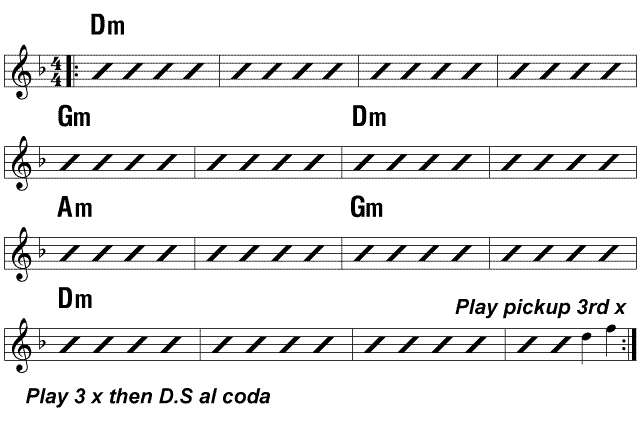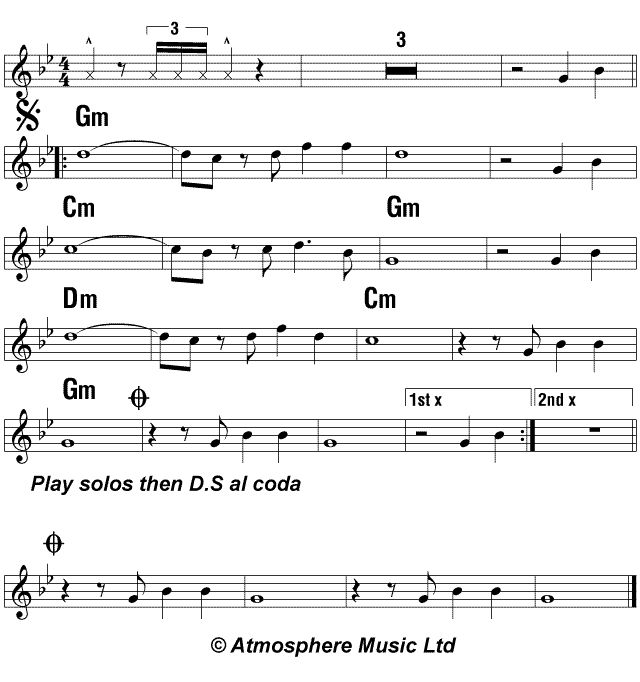Practical Impro Exercise: Minor Chords Im IVm & Vm
This is a great exercise to try if you are not yet familiar with how to improvise over specific. We start off very simply playing over one chord at a time without having to worry about the chord changing. We start off (tracks 1 and 2 below ) with two chords. When you are familiar with each you can move on to track 3 which puts those two chords together in a chord sequence.
You can take two approaches to this:
Key Scale only – this means you don’t worry about the chord notes, just use the scale of the key. This makes it very easy, but it’s a good idea to still listen out for where the chords change just so you get an idea what the different chords sound like. You may get some notes that don’t sound as good as others, listen out for them.
Key Scale & Chord Notes – still just using the scale, but this time you think about what the chord notes are within that scale. You will probably find more notes that “fit” better.
Chords separately then together
The “Gorilla” chord sliders
The impro exercises and the tune Gorilla (below) are based around the same three minor chords. These are derived from the key scale of D minor (alto) or G minor (tenor).
These sliders show you the relationship between the three different chords and the key scale so you can easily see which notes of the scale relate to the notes of each chord.
Alto
Tenor
Scales
Here is the key scale (D minor for alto, G minor for tenor)


- Play the scale in free time, ie without worrying about the note lengths.
- You can play whole chunks of the scale
- You can play smaller fragments of the scale
- Or a combination of the above
- Don’t always start on the root note, start wherever you like.
- Leave some spaces between notes or series of notes
- Jump between notes of the scale, so you just use the scale as “list” of notes that you can play in any order.
- Play long notes, e.g. whole and half notes. Listen to how they sound against the chord. Do you notice how some notes sound perfectly “in” with the chord, others may sound less comfortable. Make a mental note of how each note sounds against the chord.
The most important thing is to try to make up “mini-melodies” which can be as simple as a two or three note phrase. Try repeating them or repeating them with a very slight change – change one note or change the rhythm.
Take your time with this and once you feel you are comfortable enough with the basic exercise that you find you are able to do it but at the same time keep part of your brain available to actually hear the chords changing, then it’s time to move on to the next exercises in which we find out how the chord notes themselves can be useful.
Now move on to the tune Gorilla, which uses these chords.
Gorilla
This is a simple ska tune, you can take a few liberties with the phrasing of this, add some effects such as note bending or growling.
Use the “Gorilla” slider aboveto see how the chords relate to the key scale:
Alto
(Key scale D minor)

Chord chart

Tenor
(Key scale G minor)

Chord chart

















I play flute and way less jazz sites for us than saxophone.
I love this site and its information and audio files.
I would buy the books but it’s taking me a fair amount of effort to transpose everything for my c instrument.
Any suggestions for me?